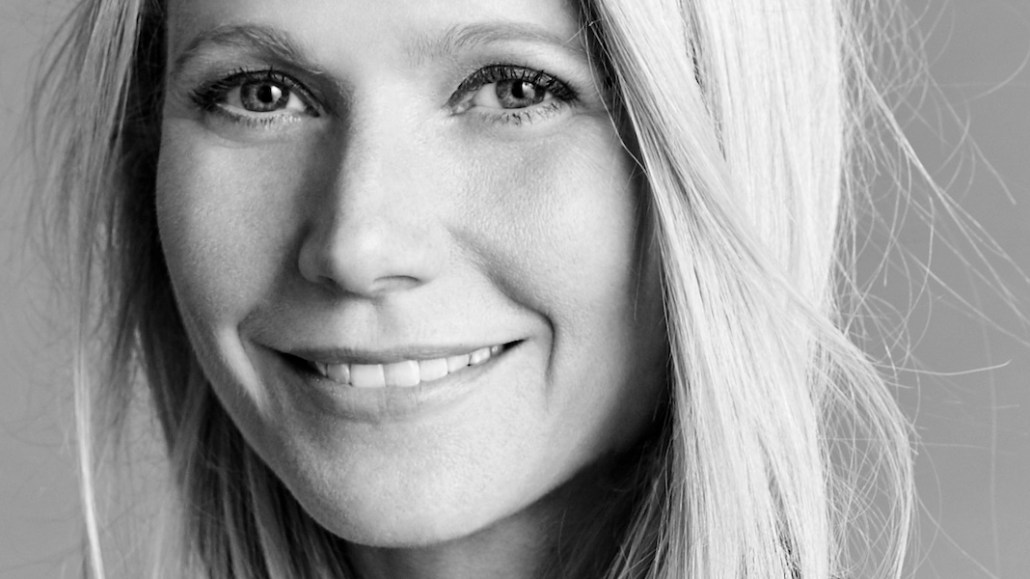Gwyneth Paltrow on building a lifestyle media brand: ‘It has to mean something’

Gwyneth Paltrow started Goop as a newsletter in 2008 to give recommendations about food, fitness, fashion and beauty. The company has since expanded to add commerce, product lines and books. Recently, Goop partnered with Condé Nast on a quarterly print magazine, launching in September. We caught up with Paltrow to learn more about the launch and what she’s learned from Goop.
Why a magazine?
We want to create a more beautiful visual experience, which is what a magazine should be. The old school creative direction you find in print is such an art; it’s been so incredible to watch that. It’s a fun merger because I feel like both sides are learning from the other.
What’s the secret to building a lasting lifestyle brand?
The recipe for success is to build a brand that authentically connects people to a mission. It has to mean something. Brands will succeed when they have values that the founder and the team honestly believe in, because the consumer can smell from a million miles away when a lifestyle play is just trying to get them to buy shit.
The intersection between numbers and creativity is the most fascinating part of what we do. I like to be constrained by the numbers. If I want to create something, but the margin is terrible, I won’t do it. But it’s all very nascent for us. We just hired a business intelligence analyst who is helping us mine through all the data on customer behavior, like how our customers differ when browsing for, say, fashion versus vitamins.
How has the Goop audience behavior changed?
Historically, we’ve had two very different cohorts: shoppers versus readers, from two very different socioeconomic backgrounds. What we’re seeing now is that readers who never shopped are starting to shop more, while shoppers who never read are starting to read more.
How hard is it to mix content and commerce?
With content, we’ve always been led by the questions that both we and our friends want answered. We make products that we want to help solve a particular problem for ourselves. We’re not trying to chuck shit at a wall to see what works. We’re creating things that are aligned with our values and bringing context to all of the product..
What’s next?
We have a lot to do. There’s a lot of audience that we have yet to reach. Thirty-five percent of our audience is international, but we don’t currently ship internationally.. We’re in big-time growth mode, and we’re trying to build an underlying structure and processes to support that. We’re just at the very tip of the iceberg.
Ad position: web_incontent_pos1
More in Media

NewFronts Briefing: Samsung, Condé Nast, Roku focus presentations on new ad formats and category-specific inventory
Day two of IAB’s NewFronts featured presentations from Samsung, Condé Nast and Roku, highlighting new partnerships, ad formats and inventory, as well as new AI capabilities.

The Athletic to raise ad prices as it paces to hit 3 million newsletter subscribers
The New York Times’ sports site The Athletic is about to hit 3 million total newsletter subscribers. It plans to raise ad prices as as a result of this nearly 20% year over year increase.

NewFronts Briefing: Google, Vizio and news publishers pitch marketers with new ad offerings and range of content categories
Day one of the 2024 IAB NewFronts featured presentations from Google and Vizio, as well as a spotlight on news publishers.
Ad position: web_bfu



